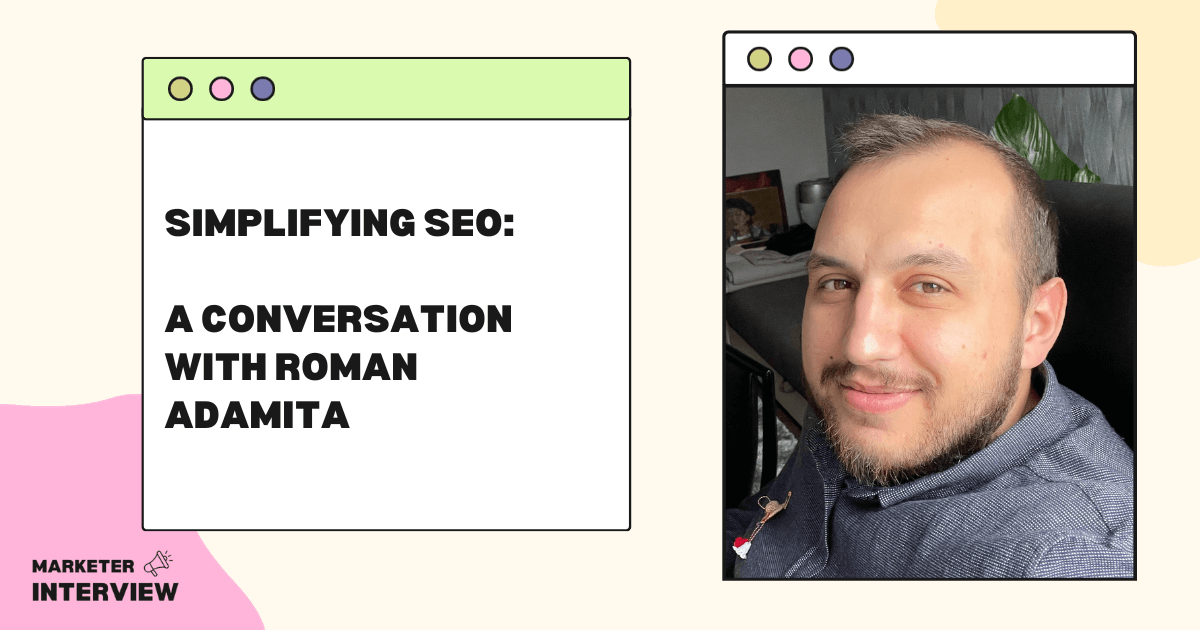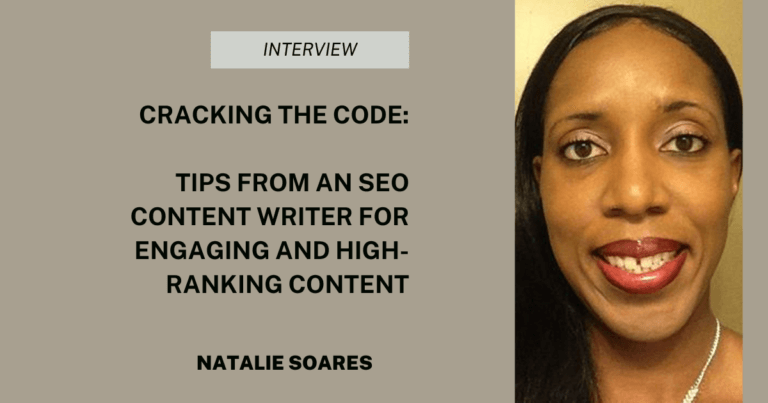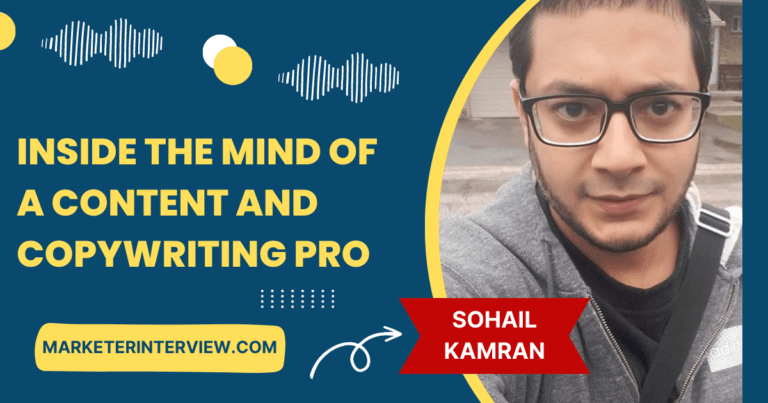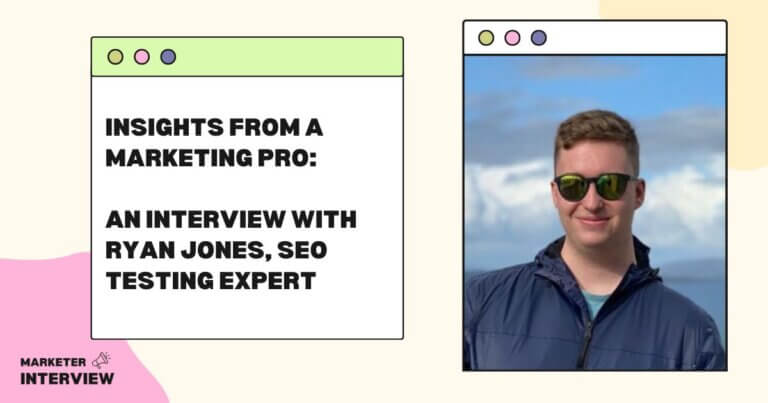Simplifying SEO: A Conversation with Roman Adamita
Welcome to another insightful edition of Marketer Interview, where we delve into the minds of the industry’s brightest minds.
Today, we enjoyed conversing with Roman Adamita, a seasoned SEO professional, the founder of Picardes, and technical SEO at Consultwebs. With a journey that commenced in 2013, Roman has witnessed and actively shaped the dynamic landscape of SEO.
In this interview, we’ll explore the significance of SEO and unravel Roman’s wealth of experience, insights, and strategies that have propelled him to the forefront of the SEO industry.
Contents
- 1 How did your journey into SEO begin in 2013, and what sparked your interest in this field?
- 2 As an expert with over 10 years in the field of SEO, can you share a pivotal moment or project that significantly shaped your career and approach to SEO?
- 3 You’ve successfully managed the migration of large e-commerce websites. What challenges did you face, and what lessons can marketers learn from such endeavors?
- 4 As an SEO Consultant, how do you approach content optimization and strategy to enhance a website’s performance?
- 5 Keyword research is a crucial aspect of SEO. How do you ensure you never miss the best keywords, and what tools do you find indispensable for this task?
- 6 As a leader, you’ve built award-winning SEO teams. What qualities do you look for when assembling a team, and how do you foster a culture of excellence?
- 7 Your competency in task management is impressive. Could you share a strategy or tool that has helped you consistently meet deadlines and efficiently solve over 90% of tasks?
- 8 Lastly, what advice do you have for the people in the SEO industry?
How did your journey into SEO begin in 2013, and what sparked your interest in this field?
I was very passionate about computers. When I was 16, I managed to work as a computer repair technician.
After almost a year of getting my hands dirty, I realized I needed to switch my focus to web design, as it started to be a trend, and I already had an Acer laptop that functioned well for this job.
Luckily, within a month, I found an office where I could learn from other specialists as an intern. They created websites, and I was in the background doing more minor things while learning how they do big things for big brands.
I am sharing this story as it brought me to create my website and realize I need to get some traffic across the web (back then, I didn’t realize Google was the primary source). This is how I met with the term SEO.
That website, Picardes, is still alive, even if it was deleted and re-opened hundreds of times due to my mistakes. Making those mistakes led me to learn how to install WordPress and Database, edit themes and plugins, and use FTP solutions like FileZilla.
Every project I had the chance to work with gave me different learnings. I always strived to do my best and not otherwise.
Big e-commerce brands taught me how to speak with the developers, optimize the page speed, restructure the categories, optimize the faceted navigation, find keyword opportunities by checking onsite searches, do log file analysis, use schema for various types of products and pages, make people and other websites provide a backlink, enrich the content, etc.
Small-medium B2B brands taught me how to create better content briefs, align my strategies with content strategists and writers, optimize existing pages, find opportunities that could have significant chances to increase organic traffic from long-tail keywords, do static pages to get more leads, etc.
Doing SEO live streams taught me to be more proactive at speaking, create engaging and better presentations, be fearless, know more people, and realize this is considerable work behind the scenes.
Several SEO success stories are publicly shared, which made me feel I can. I realized SEO is not a tactic that can be used in the same way as any other brand. If it worked on one e-commerce website, it probably wouldn’t work on another one. I stopped following a “checklist” path for certain things.
You’ve successfully managed the migration of large e-commerce websites. What challenges did you face, and what lessons can marketers learn from such endeavors?
Every brand has its challenges. But the goal is common: not to lose any traffic, either from organic search or referral traffic.
Site migration is a challenging process as it requires a lot of meetings, spreadsheets, and tests. Having a checklist created explicitly for that brand’s migration process is crucial.
When I first had to work on a site migration for an e-commerce website with 100k+ indexed pages, I had no such experience. So, I had to research and learn from others. The primary resource for me back then was Luke Carthy – I only knew him from Twitter, and I was confident in his knowledge.
Luckily, I never faced any drops that could be challenging after the site migration. The exact opposite: by following my site migration checklist, I succeeded. Knowing to test before deploying (going live) is the key to this success. Smaller things like robots.txt rules can be crucial in this process.
If you’re looking for a public site migration checklist, I suggest you check Aleyda Solis’s guide “SEO for Site Migration.”
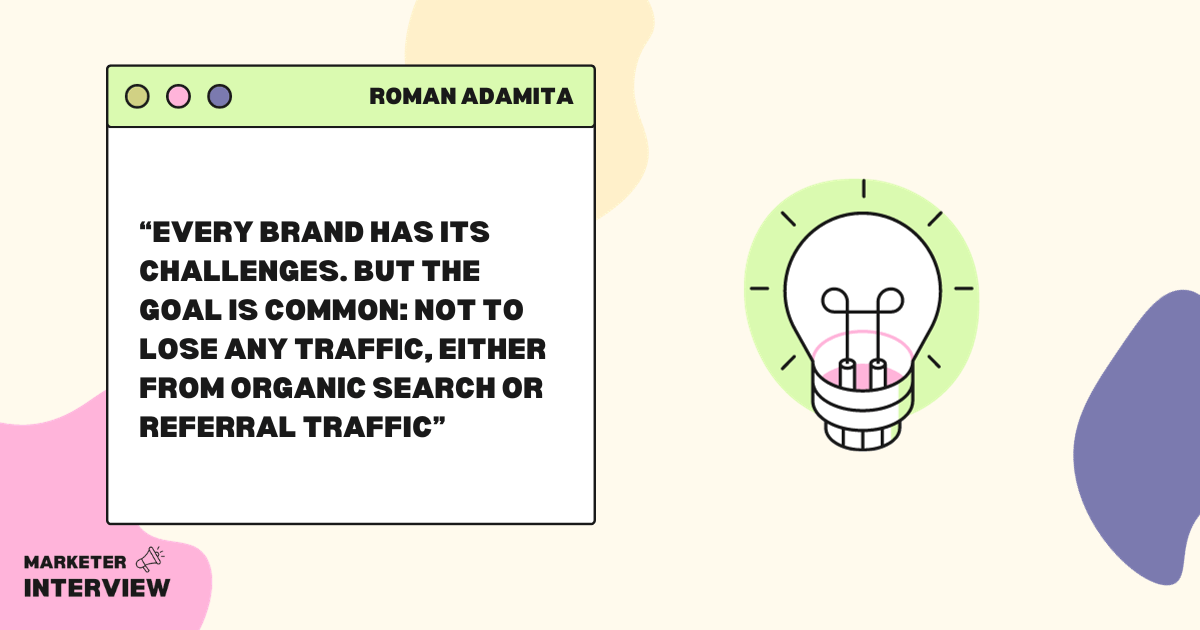
As an SEO Consultant, how do you approach content optimization and strategy to enhance a website’s performance?
It’s always through keyword research.
If the website already has a lot of published content, I usually audit it first and see if there are any opportunities.
If the published content is not doing well, I start from there. This always leads me to Google’s helpful content guide and questions to answer. If none of those questions applies to the existing content, I remove the page and keep the topic if there is an opportunity to get traffic with better content.
A quick tip: When I audit the existing pages to see if those are getting organic traffic, I usually use Screaming Frog SEO Spider with Google Search Console API integration. This will allow you to see the traffic incoming to all the analyzed pages.
When there’s a need to re-write or write new content, I create well-structured content briefs so that content writers can meet expectations. This is a critical aspect as SEOs analyze the competitors and see what can be done better in our content.
A while ago, I created this blog content brief publicly; even if I don’t use this template anymore, I’m still following the same methods.
Keyword research is a crucial aspect of SEO. How do you ensure you never miss the best keywords, and what tools do you find indispensable for this task?
I use many tools, but I always start with Googling.
If a keyword is autocompleted on Google, but other tools show no search for that keyword, that’s wrong. I am pointing this out first as it was something I realized not long ago.
Autocompleted long-tail keywords are the Oscars that could get the website’s blog to another level.
In my experience, I faced many long-tail formatted topics that get thousands of traffic per month from those related long-tail keyword variations, while other tools showed zero search volume.
I’d say trust tools like Semrush and Ahrefs for the keyword research, but not necessarily their search volume. It’s always a number that can be changed over time – it’s only a metric that gives you an idea about that keyword’s popularity. Trust your traffic after publishing the content.
In a nutshell, for keyword research, I like using:
- Google Search
- People also ask on Google
- Search Console
- Semrush
- Ahrefs
- AlsoAsked
Some other tips that can help during your keyword research:
- Search operators. E.g., use site:competitor “keyword” and see what they’ve done before.
- If the content may require a video, you’d understand that when searching for the keyword on Google. If you see a video appearing on the first page, you’d probably need one for that content.
- Use YouTube search for the keywords you want to target in the video content.
As a leader, you’ve built award-winning SEO teams. What qualities do you look for when assembling a team, and how do you foster a culture of excellence?
I look for passionate people who always hunt for better results for themselves.
People get motivated when they see good results and are rewarded for it. We always like to see and hear good things.
During my SEO Director period, I was confident we could be unstoppable if I had a good team. Finding the top-notch people on your team is the most challenging part; the second is keeping them working with you.
Training your team, listening to them, and providing advice when they feel stuck were some of my methodologies. You must listen to your team, even as a leader, as their mindset could lead to better success. You must provide your experience, not always say what they must do.
Have a well-structured client management system, pre-planned training, feedback sessions, team-building games, and monthly winnings. Let them be able to research and see what other experts did; allowing them to attend online or in-person conferences will make them a better version.
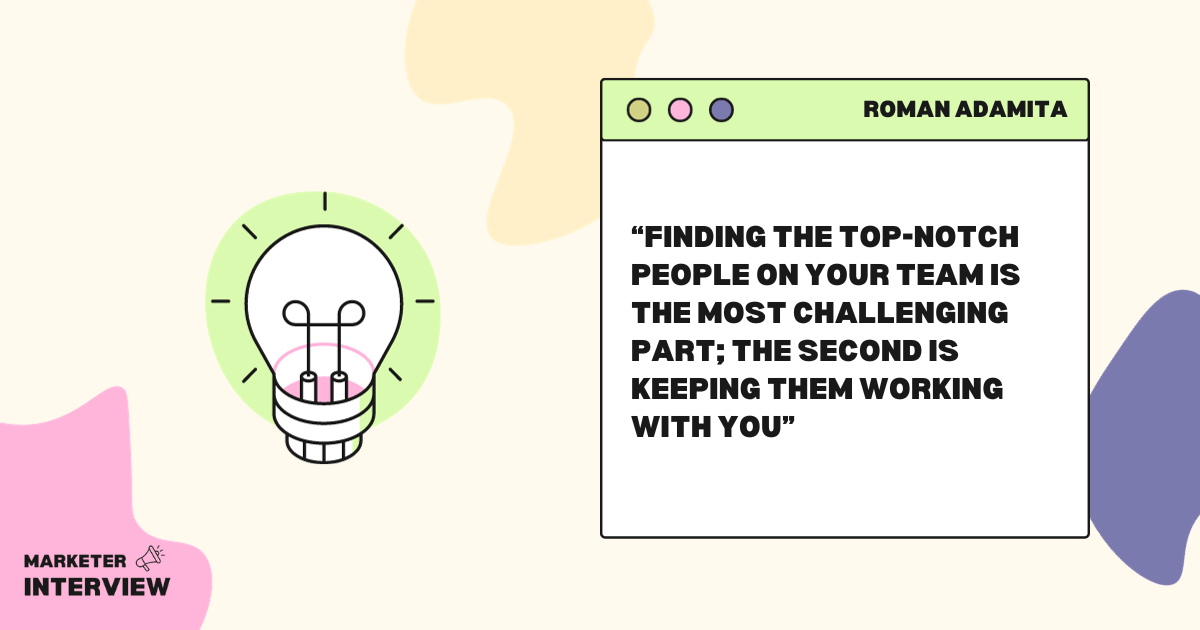
Any task management tool is good when it’s fast enough and easy to understand.
When working at an agency, the tasks and their deadlines are the most challenging parts. You are managing up to 5 clients, and each of those clients is expecting reports. I worked on a strategy that led me and the team to be on time with the tasks for over a year.
The strategy was simple (not the background of it):
- Let your team know about the incoming tasks a month before.
- Encourage them to use the task management tool in their daily job proactively.
- Prepare them for those tasks if they don’t know how. Either record a Loom video or explain the details of the tasks.
- Let them know about the expected output and what is the goal.
- At least 3 days before, have a feedback session regarding those tasks. If you have multiple members on your team, do those sessions individually. A maximum of 20 minutes for each session would be enough.
- Train the process to one or two of them so that they can train other newbies in the future.
Lastly, what advice do you have for the people in the SEO industry?
Don’t let AGI overtake your role. 🙂
Soon, simple tasks like optimizing meta titles and page descriptions will be taken by simple plugins.
For example, the Yoast SEO plugin already did it for WordPress. I can’t say it’s 100% accurate as I haven’t tested it yet, but if this exists already, I can imagine the future is not too bright for simple tasks.
If you feel you’re doing good and your approach is so unique that no AI can take it over from you – there’s nothing you should be afraid of. After all, AI is fed by us and the existing content on the web.
